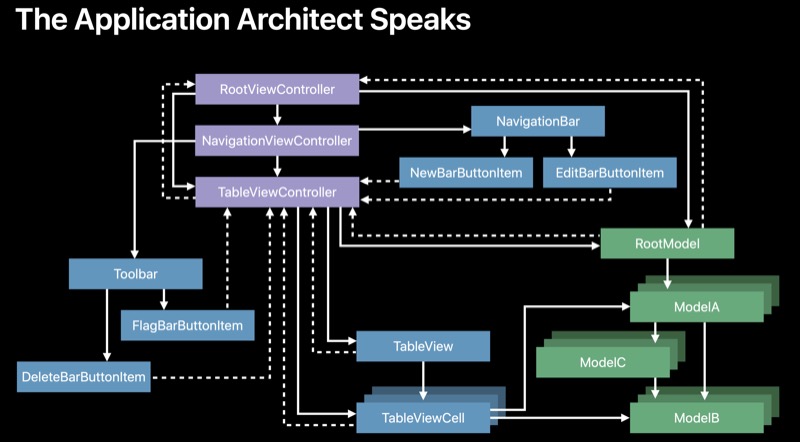WWDC 2018 session 223 is a very good session on writing good code.
It is a very casual session, with role playing. Meet Crusty.
The session sarcastically said of our role..

I agree. A modern day app developer spend most of the time architecting the views and models, not in writing efficient algorithm.
Yet, algorithm matters
When a piece of code needs to scale, the computation complexity matters.
But there’s an even more important aspect with good algorithm, and that is clean code.
A good algorithm is also one that reads beautifully, like a poem.
If you want to improve the code quality in your organization, replace all of your coding guidelines with one goal: No Raw Loops
– Sean Parent, C++ Seasoning
Example of a raw loop
Let’s start with a simple example where we want to remove multiple elements in an array. I have done the same before:
for i in (0..<shapes.count).reversed() {
if shapes[i].isSelected {
shapes.remove(at: i)
}
}
The trick of using reversed() is needed because remove will mutate instantly, therefore changing the indexes.
The sinister thing is that remove is O(n). And with the for-i raw loop, the algorithm becomes O(n^2)!
A nicer and more efficient code is:
shapes.removeAll { $0.isSelected }
Short, sweet, and O(n)
Moving multiple elements
The session went on mentioning a few other common algorithms. A complex operation is moving multiple elements in an array.
I remember writing a hideous code trying to re-order multiple rows of a NSTableView, with drag and drop..
In iOS 13, you will be glad to know they have now provided move:
mutating func move(fromOffsets source: IndexSet, toOffset destination: Int)
It now becomes 1 line of code!
It is part of SwiftUI framework, complementary to List, so you can use easily:
List {
ForEach(items, id: \.self) { item in
Text(item)
}
.onDelete { set in
items.remove(atOffsets: set)
}
.onMove { set, i in
items.move(fromOffsets: set, toOffset: i)
}
}
So, know your libraries
If you can write good algorithms from scratch, that’s good.
But if you can’t (I can’t!), then you need to know what the libraries have already provided. Use them wisely, and avoid raw loops.
Swift has provided more func for manipulating array, in the form provided by the protocols MutableCollection and RangeReplaceableCollection
More built-in algorithms FTW 🤓